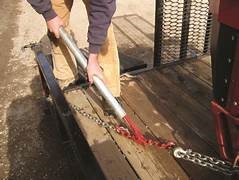Prevent accidents by reporting unsafe conditions
Have you seen someone trip and fall? Report it! Slips, trips and falls are leading causes of injury at the UW, but incidents often go unreported until after an injury occurs.
Have you seen someone trip and fall? Report it! Slips, trips and falls are leading causes of injury at the UW, but incidents often go unreported until after an injury occurs.
A Tacoma woman died from asphyxiation and her daughter-in-law is in critical condition after riding in a car with containers of dry ice. Even at normal room temperatures, dry ice will warm and release carbon dioxide gas, which can displace the oxygen inside a small, enclosed space.
Dry ice is commonly used in UW research. Its properties allow for rapid cooling of materials, but also pose unique worker safety hazards.
The information in the Guide for Selecting Office Ergonomic Furniture and Equipment is intended to provide guidance and describe the procedures for selecting the proper ergonomic furniture and equipment.
The Computer Workstation Adjustment Guidelines provide guidance on computer workstation ergonomic evaluation and adjustment for comfort.
On June 1, 2018, a UW employee was releasing chains holding a 20-foot shipping container on a trailer when the cheater bar on the lever load binder sprang loose with excessive force. The employee received a minor head injury.

Lead is a neurotoxin that accumulates in the body and damages the nervous system and causes blood disorders. Faculty, staff and students using metallic lead in a lab, shop or other workspace could be at risk for toxic lead exposure.
All quantities of metallic lead (e.g., metallic lead like bricks, buoy weights, window weights, lead sheeting, or solder) must be recorded in MyChem. MyChem is the UW’s chemical inventory management system and helps maintain our compliance with environmental and occupational health requirements.
A bat found near Husky Stadium was confirmed to have rabies, a central nervous system viral disease carried in the saliva of an infected animal that can be lethal if transmitted to humans. We are reminding students, staff and faculty to avoid coming into contact with bats, on campus or elsewhere, to avoid potential exposure to rabies.
The University of Washington maintains a no smoking or vaping policy to provide a safe and healthy environment for faculty, staff, students, and visitors at all three UW campuses.
All University personnel and students are required to follow the guidance provided in the University’s safety manuals and program manuals that are applicable to hazards in their work area and/or associated with a specific job task.
The safety and program manuals listed below were prepared in accordance with federal, state and local regulations and policies.
Click on the title to access each manual.